#another note is its glasses are technically square but i often find myself mixing them with a rectangle shape too
Note
hey do you have any tips on drawing mac opsys
absolutely ill give you my mac flopsys tutorial

this is very simplified but i hope it helps a least a little. it was done quickly so its not my best work but this is my general thought process.
now go out there and draw plenty of opsys's and i better see them or else an evil will be released upon this website unknown to mankind that has never seen before [joking

#clemask#clemart#technically#mac opsys#another example of interpretations is that did you realize in most posts mac doesnt really have freckles#there are some posts like the drawing for AAAoA and the mystery of the duck that do give it freckles#(not including any posts not posted by the official tt account)#winn always has freckles though which is why i gave them more freckles than mac if youve ever noticed... looks away#another note is its glasses are technically square but i often find myself mixing them with a rectangle shape too#this isnt on purpose like the freckles. my hand just does that. i often have to reign it back a little#if needbe i can always record myself doing those little timelapse of me drawing it if thatd help any. albeit it wouldnt be in real time#but you get the gist. the fun is all in how you interpret characters
15 notes
·
View notes
Text
a few virtual tours, a few real tours
In this strange and unusual time of lockdown for the world, one of the biggest losses to culture and society is that of galleries and museums. They are widely visited daily, across the globe, allowing generations of people to learn about and appreciate works of art and aspects of history.
Despite this, we also live in a time where people can connect very easily online. Although some people often find this tiresome or useless, instead believing people should go out and see the world for themselves, it has proved insanely useful with current events: many galleries and museums have found a new way to use this to their advantage.
Seeing as we cannot make it to our Design Connections event and talk to artists and practitioners about their current work, I thought it would be enlightening to look back on some of the works I’ve seen before that are of historical and cultural importance, and perhaps discuss why this is and how it came to be. Also, with the additional help of some of the virtual tours now on offer online, I can take a look at some works I have yet to see, and examine those too - perhaps offering insight on why I wish to visit them.
London, April 2018
One of the most well-known galleries in the world is The National Gallery, situated in London’s Trafalgar Square. It is home to many renowned artworks by lots of famous artists. I have been a few times, most recently in April 2018.
I love the National Gallery not only for the art it houses, but for the architecture. It’s one of the best places in London just to sit, maybe near your favourite painting, and watch the world go by as tourists skim past art by some of the most renowned artists in the world.
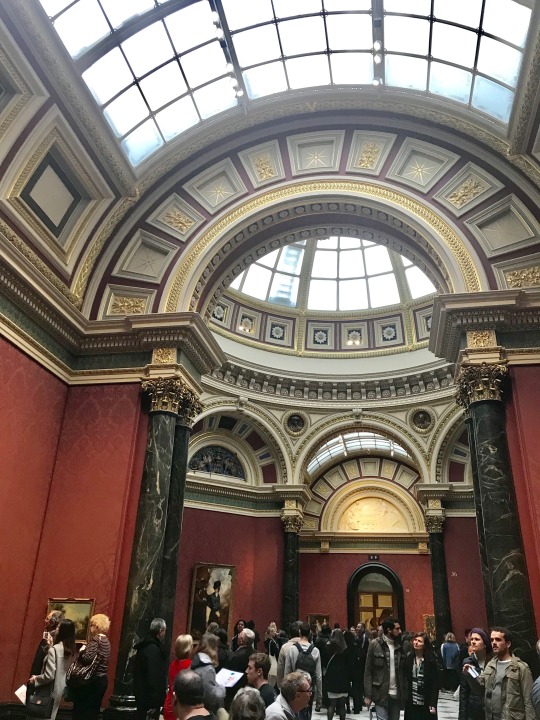
Every month the National Gallery list on their website a ‘picture of the month’, one picture from their gallery, to spotlight. April 2020′s picture of the month is one I actually took a picture of myself, in the same month two years ago. It is Akseli Gallen-Kallela’s Lake Keitele, painted in 1905 as he was recovering from malaria. Lake Keitele is in central Finland, and Gallen-Kallela, a Finnish artist, was captivated by the view. He painted it multiple times.
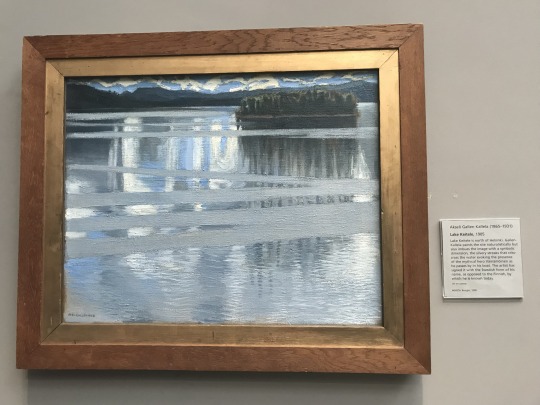
The painting is captivating, too, a mix of bright reflections and dark, sombre shadows. The National Gallery website writes that “strips of steel-grey zigzag boldly across the surface of the lake. They capture the effects of wind moving across the water and the currents beneath”. Gallen-Kallela imagined these to be down to a passing boat. The artist expressed his love of Finland through art, in a time when Finland was trying to gain independence from Russia.
Below is one of my favourite paintings of all time, displayed in the National Gallery. It was painted in 1889 by Vincent Van Gogh, one of the most famous artists of all time, and is called A Wheatfield, with Cypresses. Whilst a patient at Saint-Paul de Mausole, a psychiatric facility in the south of France, Van Gogh painted several versions of the same wheatfield. The one at the National Gallery is the final version.
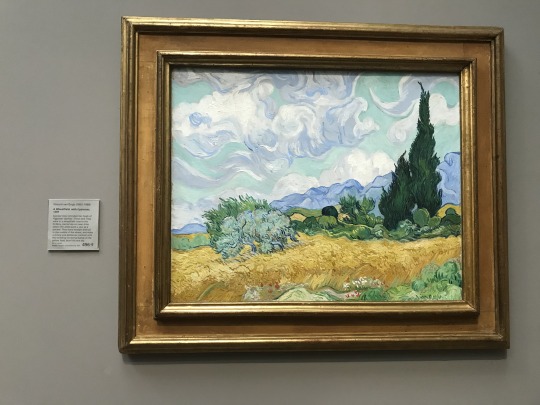
Arguably, the vast majority of Van Gogh’s artworks have captured the hearts of the world, long after his death. He paints rhythmically, with swirling brush strokes that capture the movement of nature. This particular painting boasts this effect beautifully; vincentvangogh.org notes how the Cypresses stand vertical and contrast the many horizontal aspects of the work. They also note more contrasts, such as the contrast of warm colours versus cool, or sky versus land. One quote of theirs I particularly enjoyed: the work is dubbed “restless beyond measure”, which is a common feature in Van Gogh’s work. This is a perfect example.
Athens, September 2019
Athens is home to the Acropolis, and subsequently the Parthenon, which is probably the most iconic imagery associated with Ancient Greece. It has been a source of endless fascination for centuries, across the world.

Athen’s The Acropolis Museum is a much more recent museum, opened in 2009, filled to the brim with Ancient Greek artefacts excavated from the Acropolis itself. It was purpose-built to house everything found on the hill and surroundings, and there are plenty of them.
In fact, the whole of Athens seems dedicated to its history, as even the Metro stations exhibit artefacts dug up in their construction.
The Acropolis Museum is built over yet another archeological site, an ancient neighbourhood complete with a drainage system and bathhouses.
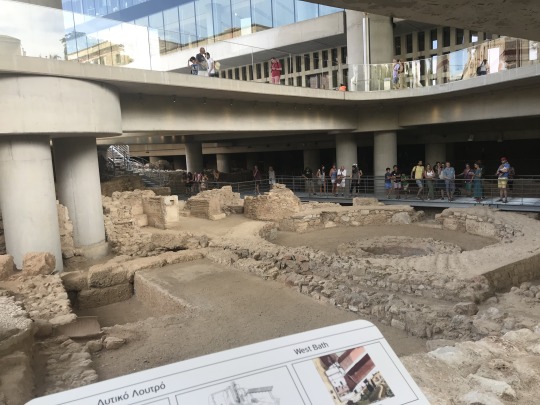
Much of the floor in the museum itself is made of glass, allowing the endless stream of visitors to view the site beneath. At the entrance to the museum there is a large drop where the remains of a bathhouse are in view. There’s also a walkway under the museum where visitors can tour the archeological site, and it is incredibly odd but also kind of touching to be immersed in ruins where people actually lived, thousands of years ago.
The Acropolis Museum, as by name, is a museum, rather than a gallery. However one area of the museum, the Archaic Acropolis Gallery, is full to the brim with sculptures and statues. Archaic refers to the period from 8th century BC until the end of the Persian Wars, or around 480 BC. This period saw immense changes in Greek language, society, art, architecture, and politics, due to the increasing population and usage of trade.
The exhibits in the Archaic Acropolis Gallery are beautifully presented on large white podiums. It is strictly no photographs, so I took none of my own (the one below is from the museum’s website). This way of exhibiting offers tourists a way of viewing the artefacts from all sides. The gallery is lit mostly using natural light through giant windows, and as the light shifts outside, the way the statues can be viewed changes too.
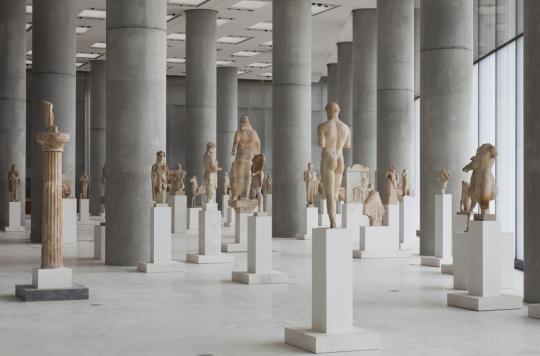
Also open is the museum’s Parthenon Gallery, seen below. It houses many of the famous Elgin Marbles, which were originally part of the Parthenon and other buildings on and surrounding the Acropolis. Most of the Marbles were removed (or stolen) by Lord Elgin who moved them to England in 1812, where they were bought by the British Museum. There has been much international pressure for them to be returned to their rightful place, especially now the Acropolis Museum houses the rest of them, but this is yet to happen. The Parthenon Gallery in Athens leaves spaces in the exhibition for the stolen pieces and displays casts of others, so it’s easily visible where the originals should be.
The sculptures once displayed on the east pediments of the Parthenon tell the tale of the birth of the goddess Athena, while those on the west depict a battle between Athena and the god Poseidon to determine who would be the patron deity of Athens (LiveScience). Although the Marbles themselves and the stories they tell are beautiful and important to Ancient Greek history, much of their coverage and popularity worldwide is down to the repatriation debate.
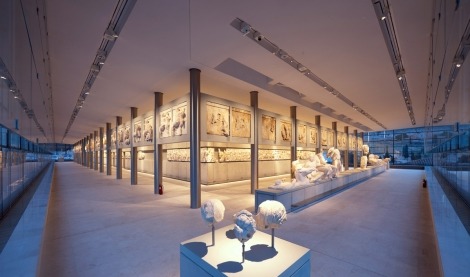
I adored Athens. I’ve had an interest in Ancient Greece since I was very young, and of course the capital city is the best place to visit for this purpose. It was such a joy to walk alongside the Acropolis, or to turn random corners and see a part of ancient history in the middle of the street.
Many people share this with me. For an incredibly long time Greece was the leading nation in politics, art, philosophy, society and culture, as well as the birthplace of democracy. Athens, as the country’s capital city, was an obvious epicentre. History.com write that “over the centuries, the Acropolis was many things: a home to kings, a citadel, a mythical home of the gods, a religious centre and a tourist attraction.” All this has led to a fascination among historians and tourists alike.
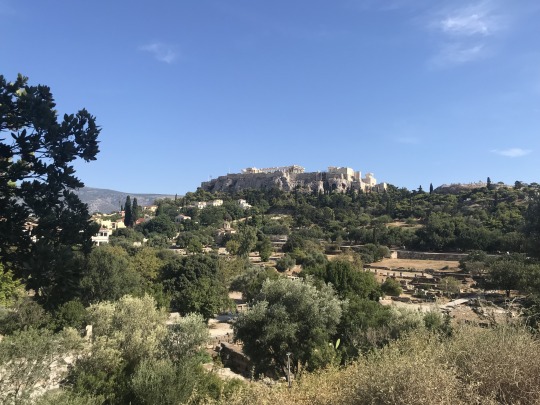
The Parthenon has been standing for over 2,000 years. It has obviously deteriorated over time, but it’s still there, and is now being renovated in a multi-million euro project. It is visible far and wide in Athens, and is an iconic symbol of not only Greek antiquity but ancient history as a whole.
It’s no wonder why the Acropolis Museum is so immensely popular. Stacked full of artefacts and pieces of history, it’s like stepping into the past.
The museum is part of Google’s Arts and Culture galleries project and therefore can be visited online, too.
Paris, January 2020
The Musée de Louvre is one of the most famous museums in the world, and for good reason. I loved wandering the halls on my trip to Paris, even when the fire alarm went off for a solid twenty minutes and not one person left in haste (truly, truly French).
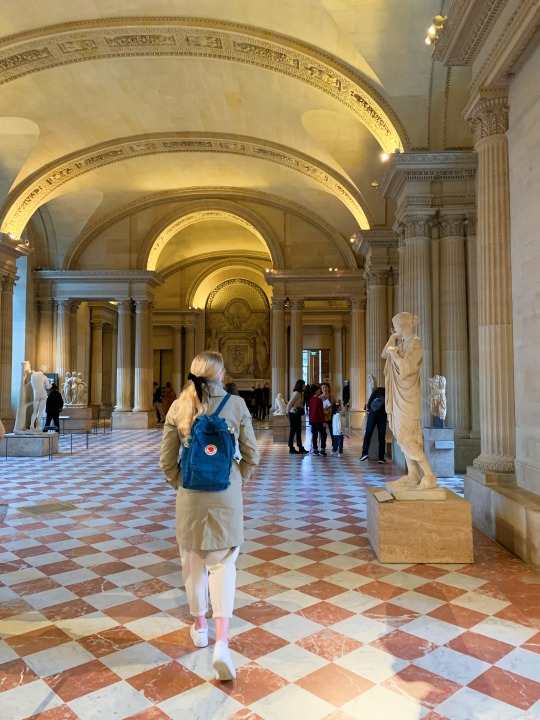
Like the Acropolis Museum, the Louvre is more of a museum than a gallery, and there are hundreds and hundreds of artefacts at the Louvre. However, one painting is the Louvre’s pride and joy. People visit the museum specifically to see Leonardo Da Vinci’s Mona Lisa, easily the most famous painting in the world. There is a carefully guarded and staffed queue system you must stand in to view the painting up close, and even then it is behind bulletproof glass (in 1956, somebody threw acid at her!).
The Mona Lisa is a perfect example of an image or painting captivating the world, and is clearly of great historical and cultural importance. Plenty of people before me, with far better knowledge and understanding, have tried to describe why exactly the Mona Lisa is so popular. Encyclopaedia Britannica’s article “Why Is the Mona Lisa So Famous?” theorises there is no single explanation, but there are plenty of reasons why the painting draws thousands of ardent admirers daily.
Clearly, the painting is very realistic and displays great technical ability. There are plenty of technically good paintings, however - in fact, the Mona Lisa is surrounded by them at the Louvre, and in the many galleries of Paris.
It could be the painting’s journey that proved it to be so popular. It became more and more well known as it travelled around France, first in the court of Frances I, King of France and part of the royal collection. In the French Revolution the collection was claimed as the property of the people, and it was only after a period in Napoleon’s bedroom that it was given to the Louvre.
The mystery of the painting’s subject has allowed the public to project an identity onto the Mona Lisa. Scholars theorise the portrait is of Lisa Gherardini, wife of the Florentine merchant Francesco del Giocondo, but there’s no proof of this as no record of a commission can be found. The speculation surrounding the painting is as much a part of culture than the painting itself.
It’s even possible that the Mona Lisa is possible because in 1911, it was stolen by Italian immigrant Vincenzo Peruggia. He was tried and imprisoned before he could sell the painting, which proved impossible due to its popularity. The ensuing media frenzy cemented the portrait into popular culture, where it has stayed for over a century.
Subsequent tours of the USA and Japan have helped it gain worldwide fame, as well as pop artists using her likeness to challenge what it means to make art and worship it. With the emergence of computers and the internet, the Mona Lisa began to be endlessly reproduced and again rose to immense popularity, to the point where I asked my sister, who has no interest in art, to name a painting - her reply was, naturally, “the Mona Lisa”.
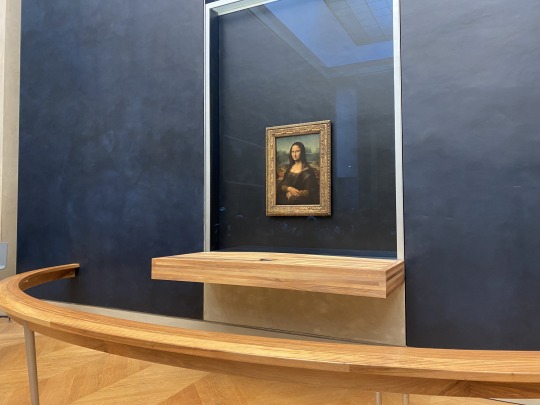
In all honesty, the Mona Lisa is obviously part of history and I am very happy to have been able to visit her, but the Louvre is so expansive and full of interesting and beautiful things that she might even have been a little underwhelming. After all, you can't get too close, and she is behind glass. Perhaps more interesting was the painting she is facing, if only for the sheer size of it. The Wedding at Cana by Paolo Veronese (1563) depicts the biblical story of the Marriage at Cana, at which Jesus turns water into wine. It is the biggest painting at the Louvre, yet one which people often miss, what with the excitement of the painting it faces.
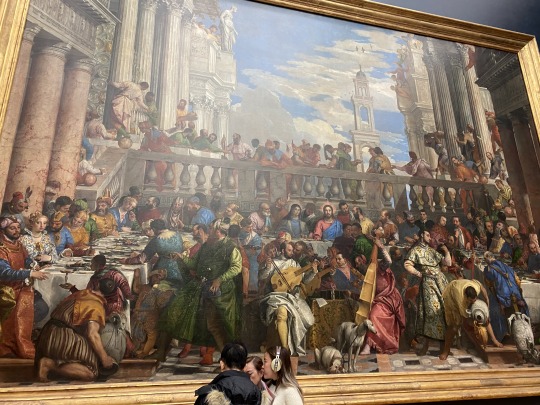
The Venus de Milo is also housed at the Louvre. It is an Ancient Greek statue thought to be the work of Alexandros of Antioch. It is believed to be a depiction of Aphrodite, but could also be of the sea goddess Amphitrite. Amphitrite was venerated on the Greek island Milos, where the statue was discovered in 1820. The statue was built from two blocks of marble and is comprised of several pieces all joined together, fixed with vertical pegs. The Louvre writes that this was common in Greek sculpture, especially in the Cyclades around 100BC, when the Venus de Milo is thought to have been sculpted. The statue is named after the Roman name for Aphrodite, ‘Venus’, and the island of Milos. Her arms were never found.
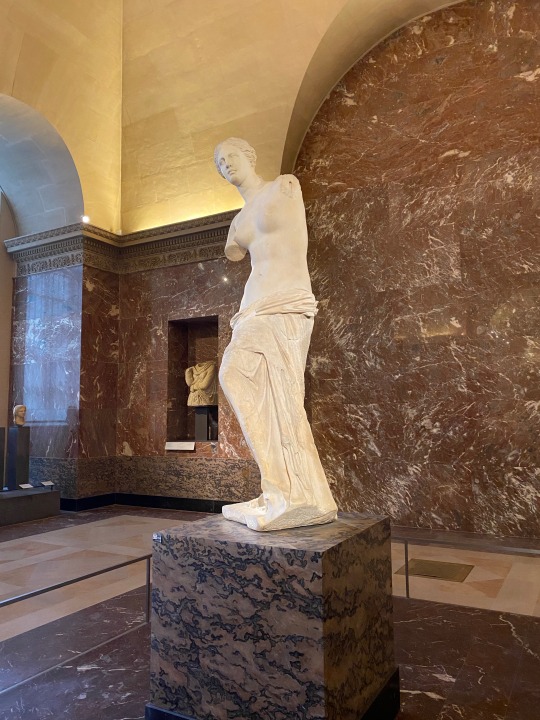
The Smithsonian note that the Venus de Milo is the most famous sculpture in the world, and “after the Mona Lisa, the most famous work of art in the world”. Despite many sculptures like it, and most sculptures from this period looking incredibly similar, she is immediately recognisable due to her missing arms. It’s probable that with her arms, the Venus de Milo would be way less popular.
She is posed in an ‘S’ curve, a feature traditional in Ancient Greek and Roman sculpture. The technique allows a more realistic distribution of weight. My Modern Met theorise she was likely “colourfully painted and adorned with jewellery, though no pigment or metal remain on the marble today”. The Louvre acknowledge that holes remain where the statue was originally adorned in metal jewellery.
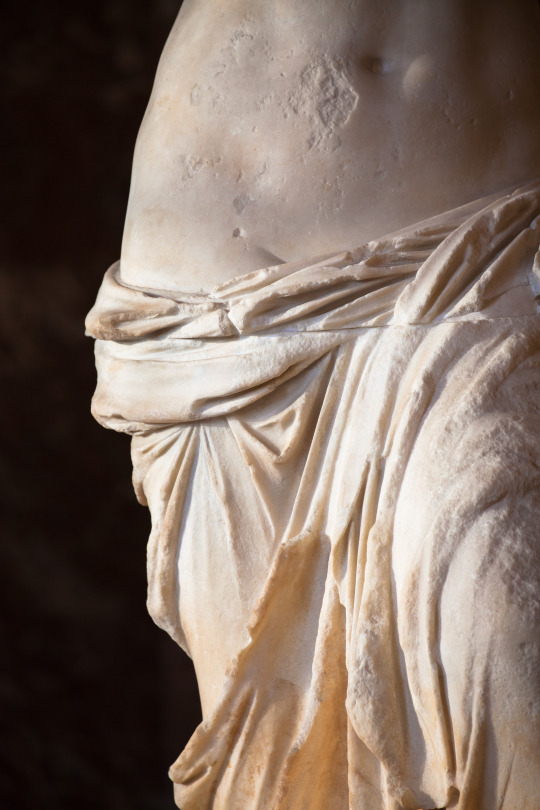
Bradley Weber, Wikimedia Commons
Bob Duggan writes in his article “How the Venus de Milo Changed Female Beauty” that female nudity was not common in art and sculpture in Ancient Greece, whilst male nudity was common due to the lack of clothing in sport and competition. It wasn’t until 350 BC that Praxiteles began to sculpt the female form, and even then, the sculptures were rarely nude, instead draped in fine clothes that hinted at their outline. Venus de Milo comes way after Praxiteles, but clings onto this trend with a draped lower half.
Like the Mona Lisa, the Venus de Milo has become a staple of classical art and an iconic representation of sculpture and Greek antiquity. It can be found everywhere, including one particular episode of ‘The Simpsons’ in 1994.

Screencap via Tumblr.
Also like the Mona Lisa, the Venus de Milo owes much of her popularity to modern art and propaganda: in fact, a specific propaganda campaign by the French in 1821, when it arrived at the Louvre. They were incredibly excited by her arrival, as the British had just bought the Elgin Marbles ripped from the Parthenon, and the Apollo Belvedere was returned to the Vatican. France were in need of an exhibit from classical Greece and, like magic, along came the Venus de Milo. However, the Venus de Milo was actually sculpted half a century after Greece’s classical age, and the Louvre's director Forbin allegedly hid her base to hide this fact.
The Art Minute write that “surely, the Venus de Milo is idealised: the features on her face are symmetrical, her breasts are small, her hips are wide, and her body is fleshy and soft”. She is the perfect example of beauty in Greece’s classical era, much changed from then to now, and offers us insight into female beauty in Ancient Greece. This was clearly their ideal if the goddess of love, beauty and sexuality was sculpted this way.
The article also says that “her twisted posture invites viewers to walk around all sides of her magnificent figure in order to see every curve and bump in her lovely form”, describing exactly what it’s like to be in her presence. Venus de Milo is 6′8″, and this affects her presence greatly also. Speaking from experience, it truly affects you to turn the corner and see her towering above you, knowing you are in the presence of part of history.

The Louvre was one of the best places I’ve ever been, and certainly one of my favourite things in Paris. It was a real bucket list moment. If you’re not lucky enough to visit the Louvre in real life, you can do it through a screen too.
Musée d’Orsay
I didn't have time to visit the Musée d’Orsay when I was in Paris, but it would be first on my list if I were to return. It houses the largest collection of impressionist and post-Impressionist masterpieces in the world, mainly French art dating from 1848 to 1914, and subsequently is home to many of my favourite artists and paintings.
Google Arts & Culture have many virtual tours available, and the Musée d’Orsay is one of them. I was delighted to find out you can essentially stand in front of some of the most famous paintings in the world, only from home, maybe in your pyjamas with a cup of tea.
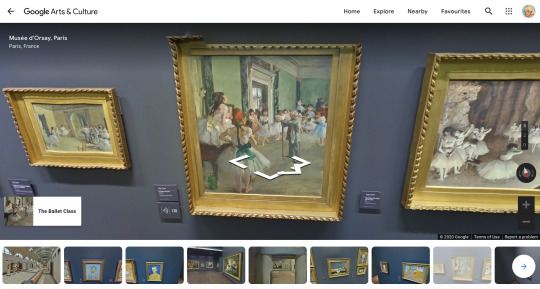
Above is The Ballet Class (or La Classe de Danse), by French artist Edgar Degas. Degas is famous for his depictions of ballerinas, as over half of his works contain dancers. The most notable of his works is the sculpture Little Dancer Aged Fourteen, the original of which is exhibited in the National Gallery of Art in NYC. Although Degas is a noted Anti-Semite and objectively cruel person, when it comes to his work I deploy a philosophy of separating the art from the artist, as I have always loved his delicate portrayals of young ballerinas in their studio.
The accompanying information given with The Ballet Class by the Musée d’Orsay reads: “more than the stage performance and the limelight, it was the training and rehearsals that interested him. Here the class is coming to an end – the pupils are exhausted, they are stretching, twisting to scratch their backs, adjusting their hair or clothes, an earring, or a ribbon, paying little heed to the inflexible teacher, a portrait of Jules Perrot, a real-life ballet master”.
This painting is captivating perhaps due to the theory of voyeurism. As the viewer, we are looking in on a scene captured from real life, without the people in it having any knowledge we are there. We have an insight into a practice most people don't see, especially people like me who cannot dance at all.
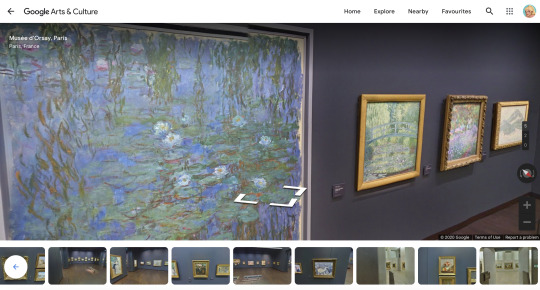
One reason why I've always wanted to visit the Musée d’Orsay is to see some of the paintings by Claude Monet. Many, many people hold Monet in high regard, listing him as one of their favourite artists, and I’m among them.
Monet bought a house in Giverny, France, in 1893. From then on, the house and its gardens became his main source of inspiration, mostly including the water lilies he planted in his water garden. Many of his paintings focus on these - the series consists of around 250 paintings - and they have become his most famous works, displayed in museums around the world.

The above painting, Blue Water Lilies (or Nymphéas bleus) focuses on a very cropped, specific area of Monet’s water garden. It features few details, instead using a very abstract brush stroke and instead using colour to hint at shapes and forms. The Musée d’Orsay write: “never was the artist's brushstroke so free, so detached from the description of forms. A close-up view of the canvas gives a feeling of total abstraction, because the brushstrokes are stronger than the identification of the plants or their reflections”.
As well as this, the gallery also suggests why the painting, and those much like it, are so captivating: “the viewer has to make a constant visual and mental effort to piece together the landscape suggested in the painting”. The paintings that we really have to think about are often the ones that stick in our minds.
Although I will make it my goal to see these paintings in real life too, I found them through Google Arts & Culture’s virtual tour.
Musée de l’Orangerie
Also the home to many paintings from Monet’s Water Lilies series is the Musée de l’Orangerie. Although the museum displays works by other artists like Jean Walter and Paul Guillaume, they are most famous for their Monet collection.

As part of his Water Lilies series, Monet painted several murals. During the 1920s, two oval rooms were built at the Musée de l’Orangerie to house eight of them, and they are still there today. The above is The Water Lilies - Morning. Together, the murals show the passage of time through the day. The light shifts and changes throughout all eight, as the museum notes that “as of 1886, Monet became more interested in representing his garden according to the rythm of light variations”.
Monet’s wild popularity may be down to pure aesthetics. He painted beautiful paintings, beautiful scenes that were pleasing to the eye, using colourful palettes and free and loose brush strokes. It could be that the water lilies themselves aren't the reason why the painting are so popular. Monet ‘zoomed in’, as such, on the water itself, cropping the edges and removing the image of any horizon or skyline.
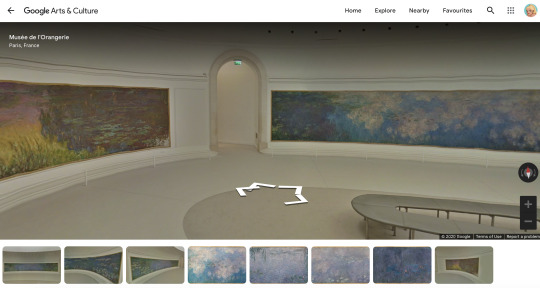
Thames and Hudson say “the works become less and less about constituent elements and orientation, and more about the energetic gestures of paintbrush and pigment... there is no frame, no single resting place for the eye, only an immersion in planes and passages of colour”.
There’s an element of freedom, and clear adoration from Monet for his surroundings, which maybe we share with him whilst viewing. The artist himself said “the water-flowers themselves are far from being the whole scene. Really, they are just the accompaniment. The essence of the motif is the mirror of water, whose appearance alters at every moment.”
I toured the Musée de l’Orangerie and the Water Lilies murals using the same method as done previously, here.
More to See
If you too are stuck indoors in 2020, or are finding this post in the future and enjoy sitting looking at paintings from the comfort of your own home, you can find lots of other virtual tours below.
The National Gallery, London, UK
National Portrait Gallery, London, UK
The British Museum, London, UK
Vatican Museums, Vatican City, Italy
The Uffizi Galleries, Florence, Italy
Picasso Museum, Barcelona, Spain
The Guggenheim, New York City, USA
The Museum of Modern Art, New York City, USA
0 notes